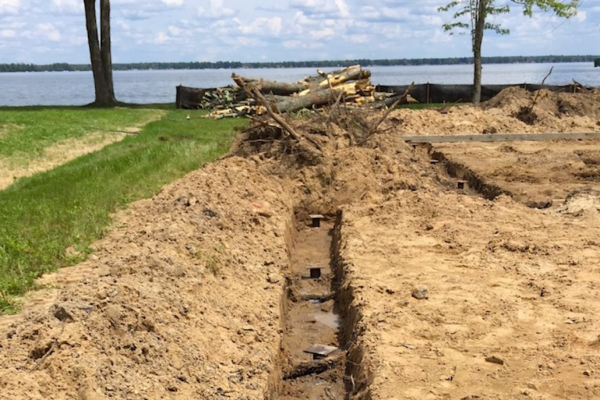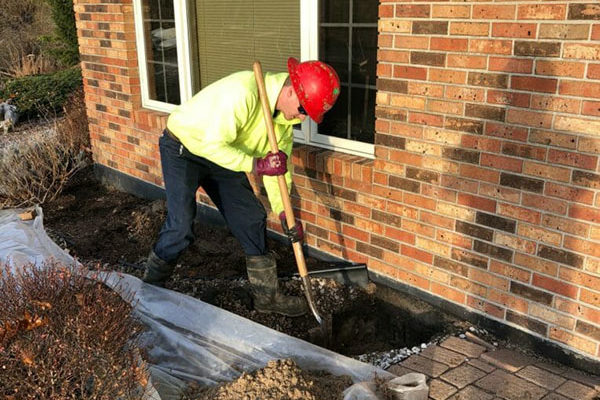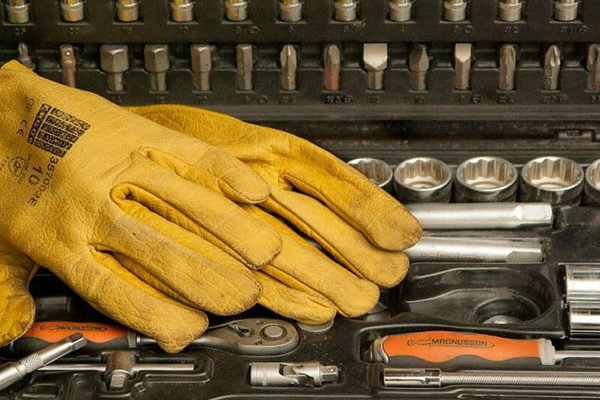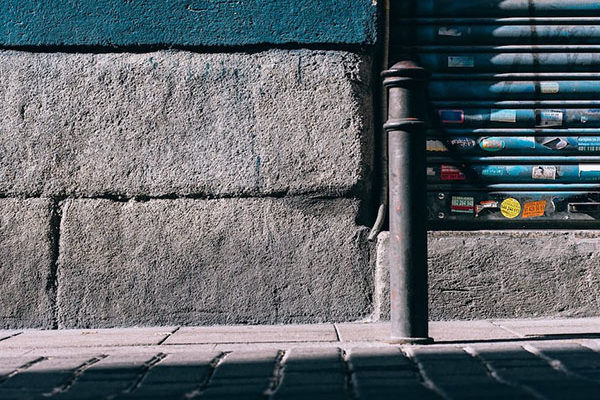A slab foundation, also called slab-on-grade, is made from poured concrete and its job is to support the weight of a home, keeping it strong and level. “On-grade,” means “on the ground,” because a slab foundation sits directly on the ground.
Signs Your Slab Foundation Needs Repair
While it’s true that many of the foundation problems happen underground, foundation issues commonly have visible effects on a house. If you see any of these symptoms, request a free foundation evaluation and quote, as you’re likely facing a foundation stabilization issue.
- Cracks in the visible parts of your foundation
- Cracks on exterior or interior walls
- Sagging, slanted, or cracked floors
- Chimney that is leaning (out or in), separating, or sinking
- Gaps or separation around windows and doors
- Windows and doors that have started sticking or have become difficult to open or close
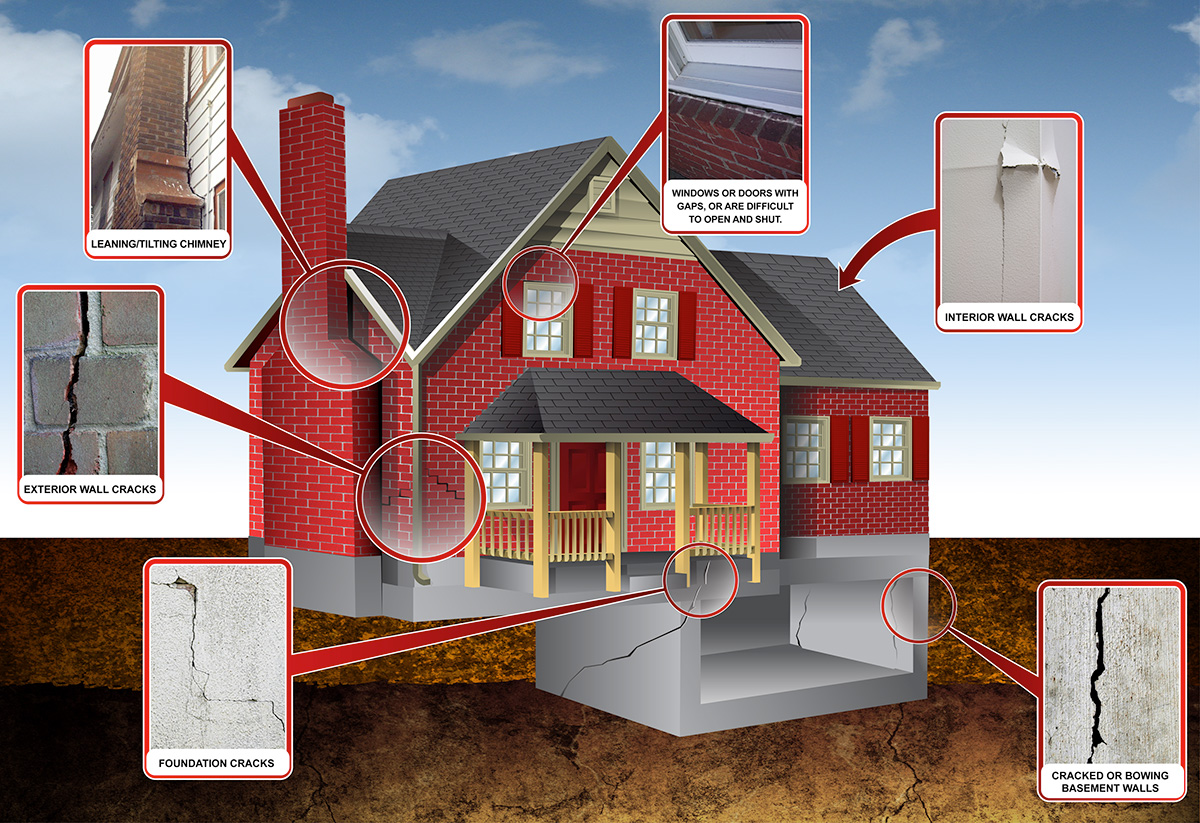
What Causes Slab Foundation Problems?
Foundation problems can result from many different causes, most of which are water and soil related, as outlined below. No matter the cause, the result is the same: an unequal distribution of weight on your home’s foundation, which then causes the slab foundation to crack and/or break.
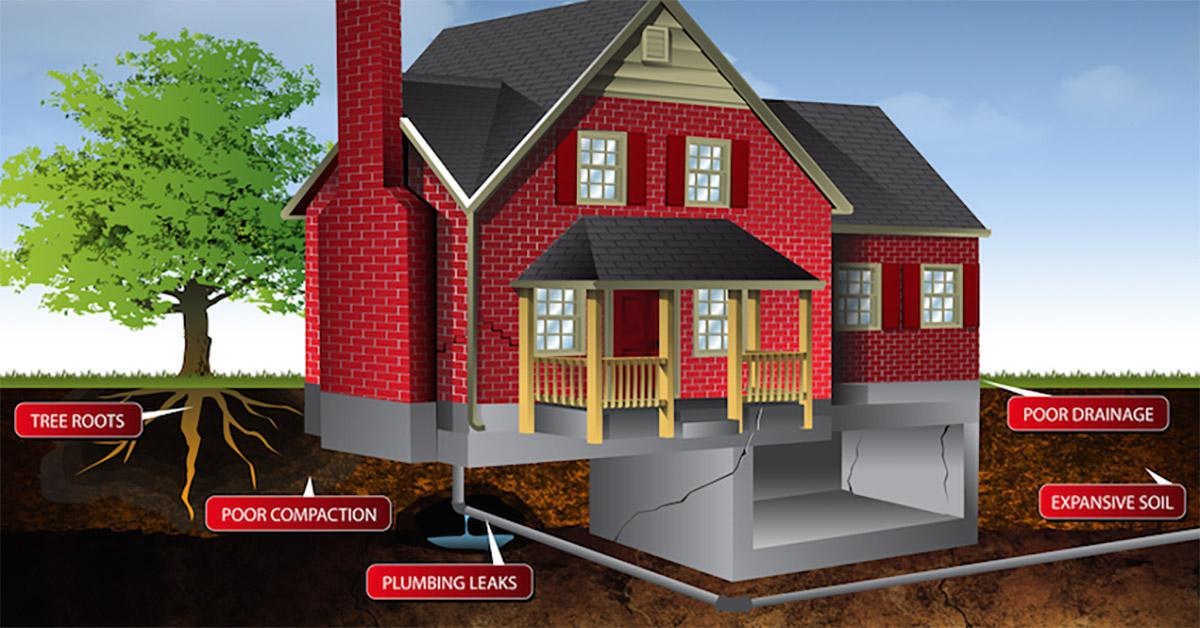
Proper grading (a downward slope) and drainage work with gravity to draw water away from the foundation of your home. When these are not done right, water can pool under and around your foundation. In warmer weather, this causes soil to constantly expand when wet and contract when dry, causing shifts that push your foundation up and then down, and exterior walls to bow in and out, creating cracks and other visible problems.
In Michigan and Ohio winters, the water can also freeze unevenly, pushing against your home’s foundation unevenly. This uneven distribution of pressure causes strain only on certain sections of walls and the foundation, while the rest remain in place, leading to cracks and additional damage.
The type of soil, and how well it was (or wasn’t) compacted are two key factors that impact the health of a slab foundation.
If a builder did not properly compact the soil (using heavy machinery to press the soil down, making it denser) before your home’s slab foundation was poured, it’s more likely to shift and settle. This is because improperly packed soil has more air and is more prone to water seepage, both of which weaken a foundation over time and cause it to eventually break. Since compaction specifications and building codes have changed over the years, older homes may be more susceptible to this issue.
Certain soils, like clay, are categorized as expansive soils. As the name implies, these soils greatly expand when they get wet, and drastically contract (shrink) when they dry out. This constant expanding and contracting causes a slab foundation to settle and shift at an uneven rate, compromising the stability of your home. Expansive soils, including clay, are common in areas of Michigan and Ohio, as are the related foundation problems.
Whether it’s a plumbing or sewer leak, heavy rain, or flooding, a concentration of water can cause serious damage to a slab foundation. Wet soil expands, which can push up and put pressure on your foundation. Concrete is also porous, so water can seep in and erode a slab foundation.
A more known issue is that tree roots can work their way into tiny cracks or gaps in slab foundations, causing the cracks to get bigger as they grow, and water to find its way inside as it runs up the roots. A lesser known, but more serious and common issue, is that trees suck up a lot of water. A tree 30 inches tall and 12 inches in diameter can absorb up to 150 gallons of water per day in the height of summer. If a tree is on one side of your house, that side will be drier, causing the soil to shrink, and additional downward pressure on that area of the slab. With the other side wetter, the soil is expanded, so it has more upward pressure. This uneven distribution of pressure leads to foundation problems.
Slab Foundation Repair Methods
Kent Foundation Repair uses helical piers (also called helical piles) to re-level your slab foundation. Helical piers are the most effective and longest lasting method for stabilizing a foundation.
We also offer crack stitching, which is a way to repair cracks in a slab foundation.

Helical Piers
Helical piers look, act, and are installed like giant screws. They have plates at the top that attach under the footer of your home’s foundation, and transfer the weight of your home to the pier, securely anchoring your home and providing strength and stability.
How Helical Piers are Installed on a Slab Foundation
- Holes are dug at each location where a helical pier will go. The holes are deep enough to expose the footing.
- Steel L-shaped brackets are placed under the footing of the foundation.
- The helical piers are then driven into the ground until they reach appropriate load-bearing soils.
- The weight of your home is shifted from the unstable soils to the helical piers using hydraulic jacks.
- The crew attempts to close any floor or wall cracks as they level the foundation. Please note: the goal is to level the foundation. Closing cracks and other cosmetic fixes is a secondary goal and not guaranteed.
- The excavated soil is filled back in to cover the steel brackets and piers.
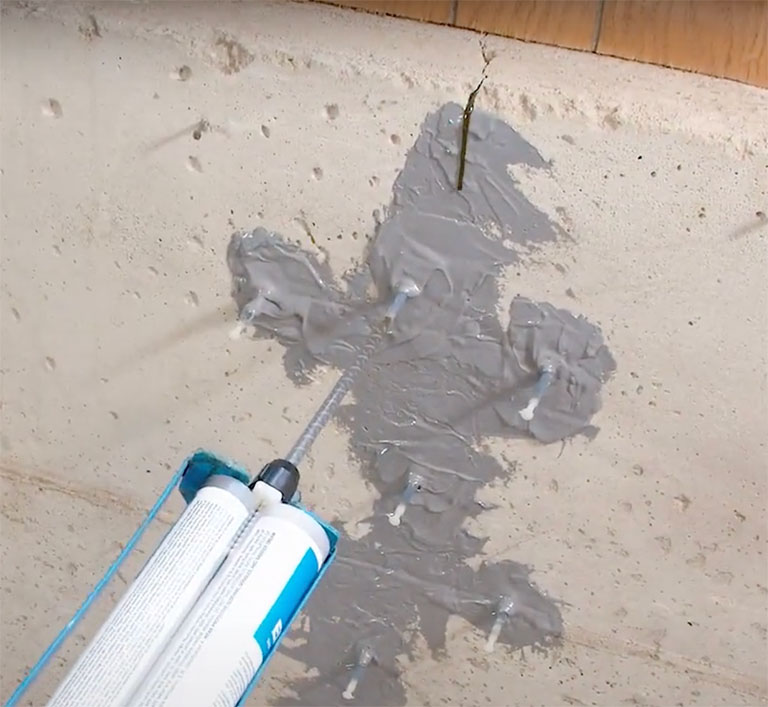
Crack Stitching for Concrete Repair
Crack stitching, or slab stitching as it’s sometimes called, can be used for concrete crack repair. Kent Foundation Repair prefers using carbon fiber stitches, because they’re stronger, more effective and efficient, less invasive, and less expensive to have installed than tie bars (metal bars).
Here’s how crack stitching is done:
- Cuts are made every 8” to 12” perpendicular to the crack.
- Each cut is filled with epoxy.
- A stitch is placed in each cut. The epoxy is spread over the top, and any excess is removed.
- Epoxy is used to fill the crack.
- All of the work is covered with concrete overlay.
Related Projects
See how we’ve repaired slab foundations on other homes.
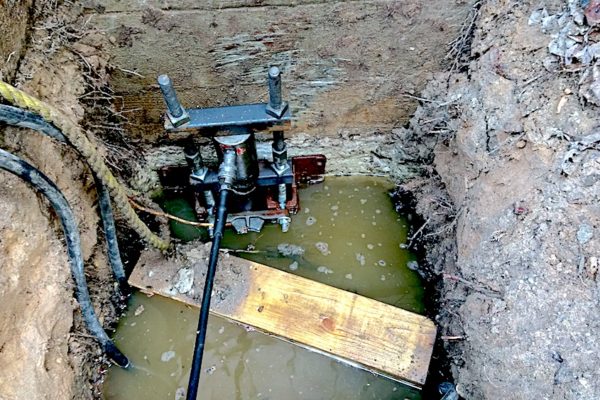
Past Project
Foundation Repair in Michigan’s Upper Peninsula
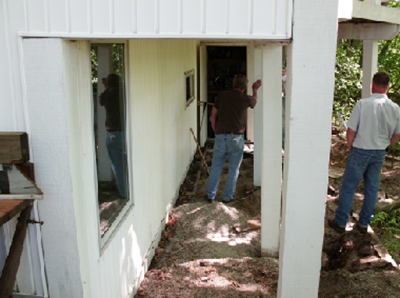
Past Project
Foundation Repair for a Three Story Home
More Helpful Information
Additional resources about slab foundations geared towards homeowners.
Slab Foundation Repair Frequently Asked Questions
How much does slab foundation repair cost?
The cost Kent Foundation Repair charges to level a slab foundation varies based on the size of your house, how many steel piers we recommend, and additional factors. The best way to get the cost is to request a free evaluation and estimate.
Can I claim foundation repair on my homeowners insurance?
Generally, the answer is no. That’s because most foundation issues happen under the slab and are due to normal wear and tear, or natural occurrences. Homeowners insurance will cover foundation repair if the damage is due to fire, a burst pipe or sewer line, vandalism, or other extreme peril.
Why don’t you do other slab foundation repair methods?
As slab foundation repair experts, our job is to offer homeowners the most effective and proven method for repairing and leveling their foundation. Steel foundation piers, as discussed above, are just that — the best method currently available for fixing foundations that are no longer level. Other methods, such as mud jacking and foam jacking (also called polyjacking), don’t resolve the underlying issues soil and water cause. Concrete piles, which are predecessors to steel piers, tend not to go deep enough, are susceptible to water damage, and don’t provide nearly as much strength as steel piers. While these methods may be cheaper and faster to implement, steel foundation piers are much a stronger and longer-lasting solution that actually solves for the underlying problems.
